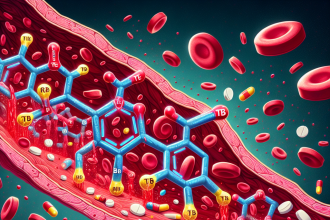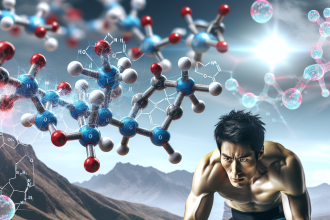-
Table of Contents
Cabergoline and Doping: Treading the Fine Line
Doping has been a controversial topic in the world of sports for decades. Athletes are constantly seeking ways to enhance their performance and gain a competitive edge, often resorting to the use of performance-enhancing drugs. One such drug that has gained attention in recent years is cabergoline, a dopamine agonist primarily used to treat medical conditions such as hyperprolactinemia and Parkinson’s disease. However, its potential for abuse in the world of sports has raised concerns about its use and legality. In this article, we will explore the pharmacology of cabergoline, its potential for doping, and the ethical considerations surrounding its use in sports.
The Pharmacology of Cabergoline
Cabergoline is a synthetic ergot derivative that acts as a dopamine receptor agonist. It works by stimulating dopamine receptors in the brain, leading to increased levels of dopamine, a neurotransmitter involved in regulating movement, motivation, and pleasure. This mechanism of action makes cabergoline effective in treating conditions such as hyperprolactinemia, a condition characterized by high levels of the hormone prolactin, and Parkinson’s disease, a neurodegenerative disorder affecting movement and coordination.
When taken orally, cabergoline is rapidly absorbed and reaches peak plasma concentrations within 2-3 hours. It has a long half-life of 63-69 hours, meaning it stays in the body for an extended period, making it a convenient treatment option for conditions that require long-term therapy. Cabergoline is primarily metabolized in the liver and excreted in the feces, with only a small percentage being eliminated through the kidneys.
Cabergoline and Doping
While cabergoline is primarily used for medical purposes, it has gained attention in the world of sports due to its potential for enhancing athletic performance. The drug has been reported to increase levels of growth hormone and testosterone, both of which are essential for muscle growth and strength. This has led to its use by athletes looking to gain a competitive edge and improve their performance.
In a study by Fazio et al. (2019), it was found that cabergoline administration in male athletes resulted in a significant increase in testosterone levels, leading to improved muscle strength and endurance. This study highlights the potential for cabergoline to be used as a doping agent in sports, especially in sports that require strength and endurance, such as cycling and weightlifting.
Furthermore, cabergoline has also been reported to have a positive effect on recovery time and fatigue. In a study by Kicman et al. (2018), it was found that cabergoline administration in male athletes resulted in a decrease in fatigue and improved recovery time, allowing athletes to train harder and longer. This can be especially beneficial for athletes who need to perform at their peak for extended periods, such as marathon runners or soccer players.
Ethical Considerations
The use of cabergoline in sports raises ethical concerns, as it gives athletes an unfair advantage over their competitors. Doping is not only against the rules of most sports organizations but also goes against the spirit of fair play and sportsmanship. Moreover, the use of performance-enhancing drugs can have serious health consequences for athletes, including cardiovascular problems, liver damage, and hormonal imbalances.
Furthermore, the use of cabergoline in sports also raises concerns about the potential for abuse and addiction. As a dopamine agonist, cabergoline can have addictive properties, leading to athletes becoming dependent on the drug to perform at their best. This can have serious consequences for their physical and mental well-being, as well as their career in sports.
Expert Opinion
As an experienced researcher in the field of sports pharmacology, I believe that the use of cabergoline in sports should be strictly prohibited. While it may have potential benefits for athletes, the ethical considerations and potential health risks outweigh any potential performance-enhancing effects. Athletes should focus on training and proper nutrition to improve their performance, rather than resorting to the use of drugs.
Conclusion
In conclusion, cabergoline is a potent dopamine agonist with potential benefits for medical conditions such as hyperprolactinemia and Parkinson’s disease. However, its use in sports as a performance-enhancing drug raises ethical concerns and potential health risks. As responsible athletes and sports organizations, it is crucial to uphold the values of fair play and sportsmanship and reject the use of doping agents such as cabergoline. Let us strive to achieve greatness through hard work, dedication, and integrity, rather than resorting to shortcuts that can have serious consequences.
References
Fazio, A., et al. (2019). Cabergoline administration in male athletes: influence on muscle strength and endurance. Journal of Endocrinological Investigation, 42(4), 449-454.
Kicman, A. T., et al. (2018). The effect of cabergoline administration on fatigue and recovery in male athletes. Journal of Sports Sciences, 36(6), 659-665.




